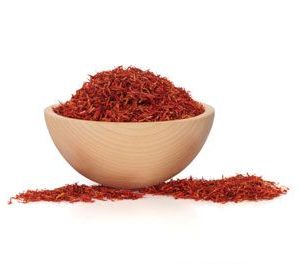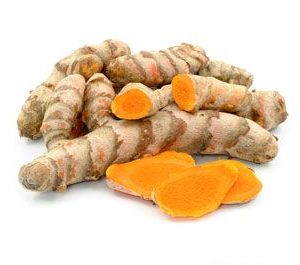Sage has been revered for centuries for its medicinal and culinary uses. Its botanical name comes from the Latin word “salvare,” meaning “to be saved.”
A perennial plant growing 1 to 2 feet high, sage produces small, green-gray and deeply veined leaves, with the intensity of the flavor growing stronger as the plant ages. A member of the mint family and closely related to rosemary, its warm and musky essence is essential for making the fragrant dressing that goes so well with turkey.
Sage comes in various forms: Russian sage is known for its lavender-purple flowers and ornamental applications, while the common sage is regarded for its pungent aroma widely used in cooking. Another popular sage variant used in cooking is pineapple sage, which bears bright red flowers and a sweet fragrance that goes well in teas.
Golden sage has variegated leaves, and purple sage indicates the color of leaf and flower it produces. Tricolor is just that, with white, purple and green variegated leaves. Three-lobed sage denotes three leaves to a stem. Sage usually comes in one of three ways: fresh, ground and “rubbed.”
Rubbed sage is made by rubbing dried sage leaves until they turn into a fine powder that is extremely light and fluffy. Fresh sage is the most flavorful and fragrant, making the most pungent recipes. When fresh sage isn’t readily available, your best bet is ground sage, although it tends to lose its strength after a year or so. It’s best stored in a cool, dark place, in a glass jar with a tightly fitted lid.
Sage pairs well with cheese. Sprinkling roughly chopped sage leaves near the end of caramelizing onions or mushrooms, egg bakes, omelets and even tea are other delicious ways to use this herb.
How to Choose Good Sage
If you’re growing your own sage plants, it’s important to know the best harvesting time for optimal flavor. According to Gardening Know How, baby sage leaves taste best, but mature leaves are viable, too. Try not to harvest too much during the fall and winter to help your plants stay strong. To choose the best leaves, pick thoses that have a vibrant green-gray color and are free from spots and yellowing.
Health Benefits of Sage
Sage is known for its antifungal, antibacterial and anti-inflammatory properties. Volatile oils (distilled from the blossoms) contain the phenolic flavonoids apigenin, diosmetin and luteolin, plus rosmarinic acid, which can be easily absorbed into the body.
Medicinally used for muscle aches, rheumatism and aromatherapy, these oils also contain ketones, including A- and B-thujone, which may help enhance mental clarity and memory. These properties may be useful in treating cognitive decline and patients suffering from Alzheimer’s. In fact, sage, made into a drink from the leaves, has been called the “thinker’s tea.”
Sage is also an excellent source of vitamin A, calcium, iron, magnesium, manganese and B vitamins, such as folate, thiamin and riboflavin. It also has healthy amounts of vitamins C and E, as well as copper. For additional information regarding sage, check out the nutrition table below.
| Sage Nutrition Facts
Serving Size: 1 tablespoon (2 grams), ground |
||
| Amt. Per Serving |
||
| Calories | 6.3 | |
| Calories from Fat | 0 | |
| Total Fat | 0.25 g | |
| Saturated Fat | 0 g | |
| Trans Fat | ||
| Cholesterol | 0 mg | |
| Sodium | 0.22 mg | |
| Total Carbohydrates | 1.22 g | |
| Dietary Fiber | 0.8 g | |
| Sugar | 0.03 g | |
| Protein | 0.21 g | |
| Vitamin A5.9 µg | Vitamin C | 0.64 mg |
| Calcium33 mg | Iron | 0.56 mg |
Studies on Sage
One study noted the history of sage’s ability to enhance memory, even without much evidence regarding its efficacy. A placebo-controlled, double-blind, crossover trial on sage involving 44 participants showed significantly improved immediate measures of word and cognitive recall. The results represented the first systematic evidence that “salvia is capable of acute modulation of cognition in healthy young adults.”
In 2011, research showed that traditional medicinal uses for sage for menopausal symptoms has more than a little merit. Eight medical practices in Switzerland participated in a study on sage that involved 71 patients, all averaging 56 years of age, menopausal for at least 12 months and experiencing at least five hot flashes a day.
Each was treated with a once-per-day tablet of fresh sage leaves for eight weeks. This preparation demonstrated clinical value in relieving mild, moderate, severe and very severe hot flashes, which decreased by nearly 50% to 100% over eight weeks in the treatment.
Sage Fun Facts
Used as a medicinal and preservative for as long as any other herb, sage was highly revered by the Greeks and Romans, who even devised a special gathering ceremony. Arabian healers of the 10th century believed that eating it would grant immortality, while Europeans, four centuries later, used it to ward off witchcraft. Three cases of tea leaves reportedly were traded for one case of sage leaves by 17th century Chinese because they appreciated sage tea.
Summary
There’s a reason why sage’s scientific name means “to save.” Healers have been using this herb for a number of ailments for thousands of years. Different varieties, like purple or Russian sage, have slightly different fragrances and flavors while providing different benefits for the body.
Remember that while you’re enjoying cheese laced with sage, you’re receiving advantages like flavonoids, phenolic acids, enzymes and antioxidants for lowered heart disease risk, inflammation and menopausal symptoms, as well as better concentration and relief from bronchial asthma. Growing sage is easy, indoors or out. A few snips added to your favorite recipes may provide you with much more than just great flavor.







Reviews
There are no reviews yet.